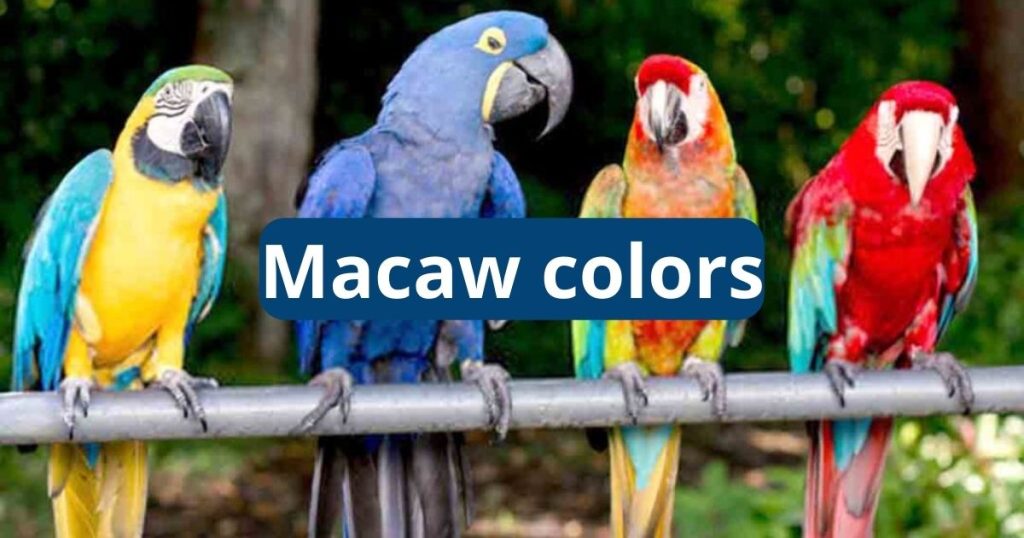Macaw Colors

Macaws are the giant parrots of the rainforest, a majestic and endangered species. They can live for up to 60 years, and they often outlive their owners! In the wild, macaws form lifelong monogamous pair bonds. They fly close together throughout the forest canopy, sharing food, grooming, and raising young.
Red macaw
The scarlet macaw is endemic to Central and South America. It lives in a wide range of rainforest canopy habitats, including tree crowns. It is a large bird with a powerful, curved beak. Its beak can generate a bite force of over 150 psi.
These birds are monogamous and mate for life. They also stay together as pairs to raise their babies and groom each other. They can be very demanding when kept as pets, and need plenty of space, branches for perching, toys to chew on, and a variety of foods.
In their natural habitat, these macaws live in groups and spend a lot of time foraging for seeds, fruits, and nuts. They are very noisy and will often squawk to communicate with each other. They will also use their voices to communicate with their owners and other pets in captivity. These birds can learn up to 15 words and will perform upon request.

Green macaw
The green macaw, also known as the red and green macaw, is one of the most beautiful birds in the world. They are found in the rainforests of Central and South America and have a life span of 30 years or more.
Their colors are due to pigmentation and light refraction. The color of the feathers is a result of the presence of psittacofulvin, which is a natural pigment produced by macaws during the process of growing their feathers.
These brightly colored birds are very popular pets. They are sociable and love to interact with humans and other animals. However, they can become frustrated when they do not get enough attention from humans and may start to molt or pluck their feathers.
These birds are considered endangered by the US Fish and Wildlife Service, as their natural habitat is being destroyed. They can be a challenge to keep as a pet, as they need to have a large amount of space. They will need a cage that is at least 3 feet wide and tall.

Blue macaw
A blue macaw’s cobalt-blue coloring and imposing size make this parrot stand out from the crowd. While this species is commonly seen in aviculture, it is endangered in the wild.
In the wild, blue macaws inhabit swampy tropical and subtropical forests, woodlands, and savannas. They feed on seeds, nuts, and fruits. Their beaks are strong enough to crack coconut shells and crush seeds. They may also consume clay from riverbanks to digest toxins from unripe seeds.
The blue macaw is a surprisingly smart bird. It has been known to use tools in order to break harder nuts, such as a chewed leaf or piece of wood. This behavior is observed both in captive and wild macaws, but scientists are unsure whether it is learned or innate. In aviculture, these birds are popular for their talking abilities and close bonding with humans. They are considered a beautiful exotic pet. However, they require ample space to roam and exercise.

Scarlet macaw
The scarlet macaw is one of the most colorful birds you will ever see. It looks like a flying bag of Skittles and can be found in the dense rainforests of South America. They are quite intelligent and can be taught to speak. They are also capable escape artists and have strong, curved beaks for eating nuts and seeds.
Macaws live in the canopy of rainforest habitats, where they are protected from predators such as monkeys, toucans and snakes. When they are frightened of something, they can quickly hide in the thick foliage. If they are in a group, they will usually wait until the danger has passed before making their escape.
The scarlet macaw is a monogamous bird and typically pairs for life. They have a clutch of two to four white, rounded eggs and an incubation period of 24 to 25 days. They are often seen preening each other as a way of showing affection.



